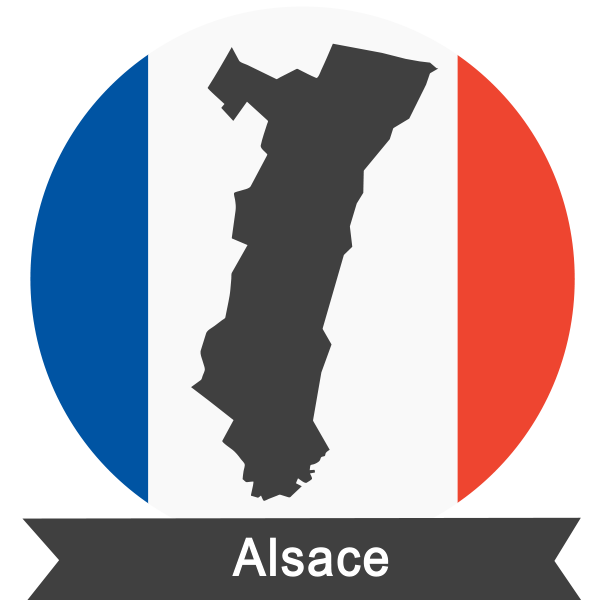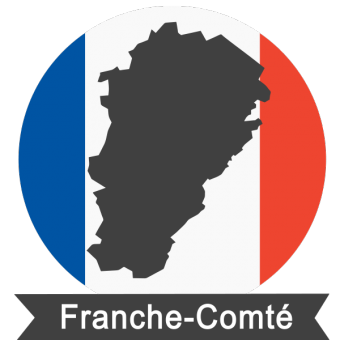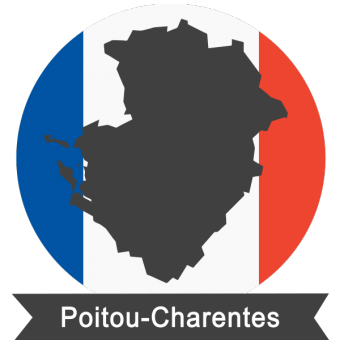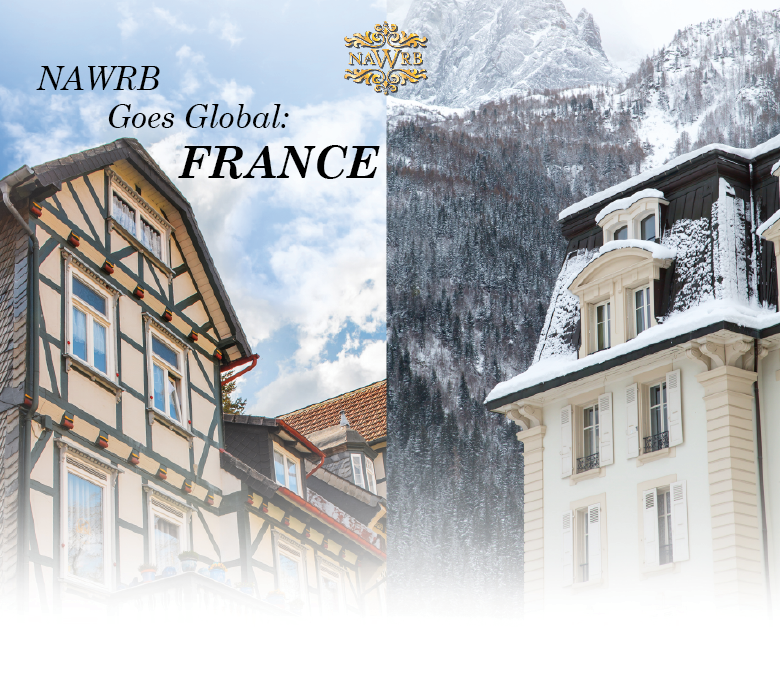
Know an Incredible Woman Preserving the
Quality of Life During COVID-19?
Submit your story today!
Read More

Consulting & Branding Opportunities
Grant your business access to insider,
proven knowledge to improve the quality of your procured
services and maximize business performance.

If you need D&I
Contact Us!
A Team Focused on Bring Diversity and Inclusion to Every Level
Learn More

#1 Top Real Estate Influencer
Desiree Patno
Diversity & Inclusion, Quality of Life, Know the Rules of the Game ®
Your Next Event
Grow Your Business
NAWRB: An SBA Resource
NAWRB is listed as a women-owned business resource for the SBA.
Check It Out
NAWRB Aging Population
Help Protect Elders
from Financial Abuse
Over $36.5 billion a year is lost annually in the U.S.
Prevent Financial Abuse

Women's Homeownership:
Dream. Stability. Sanctuary.
Life often presents us
with unplanned disruptions.

AI Technology
with
a Human Touch
Is
The Perfect Balance


NAWRB Women's Global Resource Center
A women’s depository for vendors & clients to grow their diverse spend & increase women’s employment at all levels within the housing ecosystem.

Daily Archives: May 25, 2015
In a world once dominated by men, women are exacting change and taking the lead
As an agent in Los Angeles’ high-end real estate market for nearly 10 years, I have experienced the cyclical and constantly-evolving luxury real estate market up close, and watched excitedly as real estate trends emerge and evolve before my eyes. A field once dominated by men, women now take the lead on both the broker and consumer side. On the broker side, women sell and manage the multifaceted process involved with closing a real estate transaction and as consumers, they flip, design and redesign homes, and lead the charge for owning a broad array of real estate in some of the hottest neighborhoods in town.
In the decade since I’ve been an agent, men have galvanized L.A.’s real estate market with pricey quintessential California moderns. You know the ones—the white modern boxes with walls of glass and views from Downtown L.A. to the ocean. Men are taking these sexy bachelor pads, many with home theaters, auto gallery-style garages and even nightclubs, to a whole new level while paying the price tag of ‘whatever it takes’ to achieve the ultimate dream, the girl, the lifestyle or fill the void that was missing in high school. Much like yachts and exotic cars, these are ‘trophy’ properties that assert a certain status amongst the people who build and buy them.
Continue reading →
1st Impressions
Today’s world is primarily digital; between LinkedIn, Skype, Facebook and more, it’s easy to forget what is being lost: the physical connection. In most situations, you’ll meet a new boss or client online before meeting them face-to-face and though you’ll recognize them, it’s important to remember you still need to make a good first impression. There are many aspects that can affect a first impression such as clothes, mannerisms, etiquette and most importantly, the first handshake. Though often overlooked, the first handshake can reveal crucial information that the digital world has kept hidden.
Stereotypes highlight men as having a firm handshake while women are relegated to the weak, loose handshake. Here you will learn what handshake you have, what it means and what handshake you should adopt as your own, moving forward.
Continue reading →
NAWRB Goes Global: France
From the rustic cottages of Auvergne to the snowy peaks of the French Alps, the diversity of France is boundless. Although many flock to Ile-de-France for its popular capital of Paris, there are 21 other metropolitan regions to choose from. Each region has a unique environment with varying architecture and a choice of urban sprawls or rural landscapes.
The homeownership rate as of 2012 in France is 64.3 percent. From 2012 to 2013, the homeownership rate for first time homebuyers has declined by 11 percent. However, the percentage of non-first time homebuyers has notably increased by 14 percent.
In most recent years, property prices have declined in France in addition to mortgage rates. In March 2015, mortgage rates for a 20-year loan dropped to 2.4%—a low that hasn’t been experienced since the 1940s. The drop in property prices and mortgage rates combined with the strong U.S. dollar makes it an ideal time to invest in French property for both vacation homes and permanent housing. But what region should you choose?
With so many options, there are many variables to consider when purchasing a property abroad. Potential buyers must beaware of the exchange rate, the country’s economy, and the usual factors such as weather, location, accessibility, and demographic. For example, certain regions will be buzzing with tourists year-round while others adopt more of a quiet, suburban environment.

Alsace
• Immerse yourself in Germanic culture and architecture in Alsace. Contemporary architecture consists of half-timbered homes adorned with decorative pieces of wood. Foodies will rejoice due to the region’s countless Michelin-starred restaurants and the beautiful La Route des Vins d’Alsace (the Alsace Wine Route).
• “We love living in Alsace and have found people to be very friendly and welcoming. Our location is quite superb—we have a beautiful, historic region of France to explore, and both Switzerland and Germany on our doorstep.” –From Faiz and his family who moved to Alsace. Faiz commutes to Switzerland for work, according to lost-in-france.com. (http://www.lost-in-france.com/real-france/interviews/1445-living-in-alsace)
• Annual decline in home prices (2013): -2.8%
• Annual rent of apartments by capital (Strasbourg): 11.62 €/m2
• Average price of a house: $224,365

Aquitaine
• Home to the world famous wine region of Bordeaux, Aquitaine attracts tourists from all over the world in addition to many foreign buyers. The region has a tranquil landscape with lush vineyards, rolling hills, quaint villages, and rich history that includes an UNESCO World Heritage Site. Buyers will get the best of both worlds as Aquitaine borders the Atlantic Ocean making it popular among surfers and boaters. House prices vary greatly in Aquitaine due to the option of living on the coast or the ever-popular capital of Bordeaux.
• “As a family, there is less stress, a calmness in just enjoying the moment. It’s a simpler life here.” –Jennifer, a former New York resident who writes the blog, American Mom in Bordeaux.
• Annual decline in home prices: +0.2%
• Annual rent of apartments by capital (Bordeaux): 13.55 €/m2
• Average price of a house: $190,617

Auvergne
• Those seeking an escape from the modern world will feel at home in the old world charm of Auvergne. Auvergne is a quiet region that remains somewhat remote due to a mountainous volcanic landscape shrouded in a blanket of thick forests. Properties usually adopt the half-timbered architecture aesthetic although farmhouses with stone foundations are also popular. This region is best for buyers that crave outdoor exploration rather than resort-style attractions.
• “The reason why we are in the Auvergne is because we bought Chateau de Maulmont. We came to the Auvergne by chance and were very pleasantly surprised.” –Theo and Mary Bosmam who renovated a castle and transformed it into a hotel and gastronomic restaurant.
• Annual decline in home prices: -2.9%
• Average price of a house: $132,507
 Bretagne
Bretagne
• Known for its beautiful coastline by buyers and travelers alike, Bretagne is a common destination for vacation. However, actual foreign residents only comprise 2 percent of the region’s population with a majority of inhabitants being native to France. Interested home buyers must consider the demographic which primarily consists of families and adults over the age of 35. Homes are typically in the style of longére which is rectangular shaped with granite used as a dominant material, and thatched or slated roofs.
• “We can leave our house and in five minutes we can be having a picnic by a fairy pool or overlooking the Devils grotto. And in summer, there are concerts in the amphitheater in the forest. As much as we loved music concerts in Manchester, nothing compares to the acoustics and surrounding of an amphitheater in an enchanted forest.” –Jenny, a British expat who moved to Bretagne from Manchester.
• Annual decline in home prices: -5.7%
• Average price of a house: $172,989
 Bourgogne
Bourgogne
• Beloved for its coveted wines, Bourgogne has some of the finest wineries in the world. Attractions in this region are endless. From breathtaking Romanesque cathedrals to multiple UNESCO World Heritage Sites, Bourgogne has widespread appeal. But with widespread appeal comes a hefty price. Due to its popularity with tourist both internationally and within France, properties can be expensive. Thus, Bourgogne is ideal for buyers looking to relocate as opposed to a periodic vacation home.
• Annual decline in home prices: -4%
• Average price of a house: $138,590
 Centre-Val de Loire
Centre-Val de Loire
• Although called “Centre,” this region isn’t technically in the center of France. Rather, it is the center of northern France. Properties can be expensive in Centre with expansive chateaus. The northern area of Centre has a great hub for transportation for those that wish to explore France with easy accessibility. Express trains are available to Paris along with motorways.
• Annual decline in home prices: -2.7%
• Average price of a house: $154,232
 Champagne-Ardenne
Champagne-Ardenne
• Known for its namesake, the Champagne-Ardenne region is lush and fertile with rolling hills. Although it produces the famous sparkling wines, it does not attract a high percentage of tourists. The quiet agricultural nature of the region has a low population density but nevertheless has a beautiful, rural countryside with an UNESCO World Heritage Site. Buyers can expect rustic villages with medieval architecture.
• Annual decline in home prices: -4.1%
• Average price of a house: $139,576
 Franche-Comté
Franche-Comté
• Art lovers and outdoor adventurers alike will enjoy the Franche-Comté region. It’s capital, Besancon, has one of the oldest art galleries in France with pieces by highly revered artists. For this reason, it has been dubbed the “petit Louvre.” The landscape remains green almost year-round which makes it an excellent location for hiking and other outdoor activities. Those familiar with French delicacies will recognize the region for its namesake: Comte cheese. Franche-Comté has an especially high decline in home prices currently with -6 percent in 2013.
• Annual decline in home prices: -6%
• Average price of a house: $158,984
 Île-de-France
Île-de-France
• Although there are eight administrative departments, Île-de-France is commonly regarded as Paris. The region is a booming economical hub with highest per-capita GDP in France. The reiver Seine runs through Île-de-France and is highly visited by tourists. Île-de-France attracts novice tourists and millennials for its urban metropolises and famous capital, Paris. But, the region is also one of the most expensive areas in all of France, boasting steep prices that rival if not surpass prices in San Francisco and Tokyo.
• Annual decline in home prices: -1.8%
• Average price of an apartment (Paris): $6,804 sq/m2
 Languedoc-Roussillon
Languedoc-Roussillon
• Buyers not afraid of heavy tourism are ideal for Languedoc-Roussillon. The region has sandy beaches and pristine waters with a heavily developed tourism industry. However, inhabitants can escape other travelers by either visiting or settling in old Languedoc which adopts more of an old world charm. Houses are typically rectangular-shaped and made of stones and clay with sloping roofs.
• Annual decline in home prices: -5.3%
• Average price of a house: $166,400
 Limousin
Limousin
• Limousin is very sparsely populated with the city of Limoges containing most of the region’s inhabitants. According to About-France.com, no town in Limousin has more than 20,000 inhabitants. Thus, buyers must understand living in the region means a peaceful, albeit isolated lifestyle in a rural setting. Limoges and Brive-la-Gaillarde are the most common cities to live in and most populated.
• Annual decline in home prices: -3.5%
• Average price of a house: $116,580
 Lorraine
Lorraine
• Like all of France, Lorraine has rich history. The region is a result of a division of lands made by Charlemagne. It shares a border with Luxembourg, Germany, and Belgium which gives it diverse influences. In addition, Lorraine is the birthplace of the famous Joan of Arc, whose village can be visited. Small, rustic villages and rural landscapes fill the region. Buyers shouldn’t expect lavish chateaus in Lorraine. Rather, humble farms are the common form of properties.
• Annual decline in home prices: -3.7%
• Average price of a house: $146,646
 Basse-Normandie
Basse-Normandie
• Also known as Basse-Normandie, Lower Normandy consists of the lower, western portion of Normandy. Many know this region as the location of the D-Day landings in the 1940s. Expats of the United States will experience a level of comfort in Lower Normandy as it attracts many tourists with many speaking English. Inhabitants have the option of traveling by car on the motorways, rail (which is the most common), and ferry.
• Annual decline in home prices: -4.2%
• Average price of a house: $149,294
 Midi-Pyrénées
Midi-Pyrénées
• Midi-Pyrénées is unique in that is not a historic province. Instead, it was created in the 197-2 to establish a regional metropolis. The region is widespread, boasting the largest surface area of the administrative regions. Most inhabitants gravitate towards Toulouse and its surrounding areas which contain more than 40 percent of the population. Buyers wanting to escape their fast-paced cities will especially enjoy the tranquil, rural nature of Midi-Pyrénées.
• Annual decline in home prices: -1.1%
• Average price of a house: $159,730
 Nord-Pas-de-Calais
Nord-Pas-de-Calais
• Nord-Pas-de-Calais has everything a buyer can want: close proximity to travel destinations such as the South of England, beautiful chalk cliffs on the western coast, and easy accessibility for all forms of travel. However, the region also has one of the highest unemployment rates so buyers within retirement age are highly encouraged. Many of the vital economic industries of the region such as factories and mines were closed as the industrial age waned. The region is working hard to reestablish its economic base though and is still one of the most densely populated areas of the country.
• Annual decline in home prices: -0.1%
• Average price of a house: $160,561
 Pays de la Loire
Pays de la Loire
• Pays de la Loire is only a recent creation of the late 20th century. Originally a part of Bretagne, the region calls much of historical Bretagne its own. Nantes—the capital—and Angers are popular cities to settle in. Pays de la Loire has luxurious appeal with seaside resorts peppering its coast. But with luxury comes a hefty price. The region has one of the highest average costs of a home. While $163,829 may seem low, this is only an average of the entire region. Many of the higher prices will be concentrated near the coast, Angers, and Nantes.
• Annual decline in home prices: -0.9%
• Average price of a house: $163,829
 Picardie
Picardie
• Picardie is a great region for both young and old working professionals due to its commuting distance to Paris. Many can commute via car or train to their Parisian jobs yet enjoy the property costs of the region as opposed to the steep costs of Paris. Although Picardie does have more contemporary towns, it is highly focused on agricultural production with sugar beets being the most prevalent crop.
• Annual decline in home prices: +0.1%
• Average price of a house: $159,998
 Poitou-Charentes
Poitou-Charentes
• Created in 1956, Poitou-Charentes has ideal weather with one of the sunniest climates in France. The region is not densely populated, however. Buyers can expect a largely rural area with less than 100,000 citizens in the capital. Poitou-Charentes lies on the coast with much of its coastline riddled with oyster beds which are a specialty of the region. With pristine oysters and sandy beaches, many tourists flock to the sun-kissed region for rest and relaxation.
• Annual decline in home prices: -4.3%
• Average price of a house: $149,857
 Provence-Alpes-Côte d’Azur
Provence-Alpes-Côte d’Azur
• The common French image of sprawling lavender fields comes from Provence-Alpes-Côte d’Azur. The capital of the region is the ever-popular city of Marseilles. The region has the most expensive property prices in all of France for good reason. It has rich history that actually makes the region older that France itself, is home to famous authors and painters, has delectable cuisines that would delight any foodie, and of course, has excellent wineries.
• Annual decline in home prices: -2.9%
• Average price of a house: $299,321
 Rhône-Alpes
Rhône-Alpes
• Millennials and professionals in technology fields will find good job prospects in Rhône-Alps. The city of Lyon is considered a major high-tech city in France with many start-ups and major companies such as Hewlett-Packard. Many know the region for its respected ski slopes. Because of this, much of the economy of the region is fueled by tourism. Like Provence, the popularity of the region and tourist appeal makes it a highly expensive place to live.
• Annual decline in home prices: -2.2%
• Average price of a house: $241,250
 Haute-Normandie
Haute-Normandie
• Like Lower Normandy, Upper Normandy (Haute-Normandie) is popular among tourists and contains inspiring pieces of architecture such as towering cathedrals and rustic half-timbered homes. For the most part, the region has resisted contemporary architecture and maintains medieval aesthetics. The region no doubt has stunning landscapes as Claude Monet painted his famous Water Lilies painting in his Upper Normandy village of Giverny.
• Annual decline in home prices: +1.1%
• Average price of a house: $171,829
To view the original article please see our magazine titled “Advancements for Women” Vol 4, Issue 3 by Clicking Here
OMWI: Take Advantage of Your Ally
Did you have any idea that there are 20 offices throughout federal agencies that focus on the promotion of women and women-owned businesses? They are the Offices of Minority and Women Inclusion (OMWIs) in agencies such as the Consumer Financial Protection Bureau (CFPB), the Federal Housing Finance Agency (FHFA), and the Federal Deposit Insurance Corporation (FDIC).
Established in the Dodd-Frank legislation in 2010 by Congresswoman Maxine Waters of California, these offices are charged with helping women-owned businesses become vendors and ensuring that women are hired in the agencies and financial institutions they regulate.
Advancing women is a practice that, until recently, the federal government has hardly ever focused on. In the federal government (nearly three million civilian employees), women are growing in number, though not necessarily influence. While 44 percent of the federal workforce is female, women hold only one-third of Senior Executive positions at federal agencies, according to Government Executive. One study by the Center for American Progress found that, on our current pace, it will take until 2085 for women to attain parity with men in leadership roles in our country.

But that can change. While recently moderating a panel of two OMWIs – one from the FHFA and CFPB – it became clear that OMWI could be named the Office of Women Advancement because of their mandate to advance women internally and externally with their agencies. Raising the number and authority of women within government is at the core of the 20 OMWIs. While the history of these offices has been well-documented, women business owners should know the ways they can take advantage of these offices.
Important to remember, these tips of using OMWIs to your benefit will largely only apply to the federal agencies dealing with financial matters or the Federal Reserve Banks. Nonetheless, using OMWI standards with other agencies or in the private sector can prove to be a valuable approach.
Diversifying the Supply Chain
Along with encouraging diversity within the workplace, OMWIs exist to enable more contract awards to women-owned businesses. Section 342 of Dodd-Frank goes to say that efforts to assist women extend to contracting, where OMWIs must support “inclusion in all levels of business activities.” That’s a large mandate to help women win more contracts. Moreover, these are the only offices that serve all women-owned businesses, not just women-owned small businesses. For the growing number of “mid-tier” women-owned contractors, this is a new avenue for support and access.
Women are underrepresented in federal procurement opportunities, and OMWIs are trying to address this gap by awarding more contracts to women-owned businesses. OMWIs are only at the financial oversight agencies, though their sister Offices of Small and Disadvantaged Business Utilization (OSDBUs) exist in most other agencies. With that in mind, if federal contracting is in your business plan, then you should use OMWIs to get in the door.

Inclusive Hiring and Leadership
The most obvious place for inclusion is within an agency itself. Section 342 of Dodd-Frank states, “Each agency shall take affirmative steps to seek diversity in the workforce of the agency at all levels of the agency….” Importantly, diversity in the workforce explicitly includes senior management—the most important and often most bereft of women across the federal government. For example, according to the FHFA’s 2014 OMWI report, only one-third of the FHFA’s executive leadership is female. Only slightly better is the FDIC where women make up 35 percent of leadership—despite nearly half of the agency’s overall workforce. OMWIs are tasked with creating a more fair and diverse workplace within an agency’s hiring and leadership teams, meaning they have the ability to offset this imbalance and underrepresentation of women.
This can benefit you twofold. First, and most obvious, if you have dreamed of holding a position in the civil service, then go for it. Let the OMWI be your ally. For those less inclined to join the federal workforce, this policy benefits women: simply put, more women inside will help women outside.
Setting the Tone
The arm of OMWIs, however, extends beyond the government. Referring back to Section 342, these offices are responsible for developing “diversity policies and practices of entities regulated by the agency.” It is no secret that women at the table in leading financial positions are the exception, not the rule. Fortunately, with the advent of standards to ensure inclusion, this may be changing, and women may have a growing leadership role in the financial sector.
The abilities for this to be useful to women business owners are again, twofold. First, as these standards are developed, women should be at the table prioritizing and developing the standards. In conversations with OMWIs, they welcome feedback about how to achieve their mission. More importantly, however, may be the impact these new standards have on commercial entities regulated by these agencies. In the real estate world, for example, this includes banks that issue, buy, and sell loans. Providing women a stronger role in such a space would better represent the demographics affected by the decisions that lenders make.

Bonus Benefit: Reporting Data
Mandated by law, OMWIs must submit annual reports available on agency websites. As a federally sanctioned document, the statistics and findings of these reports carry weight throughout government. In advocacy, especially at the federal level, numbers are everything. Culling these reports for data can get numbers that make the case. These reports, which are all available online, also provide data on regional differences and issues affecting women.
Taking advantage of available online resources is crucial in understanding the gaps, needs, and much-needed progress of women in the financial community. More importantly, this information can help your business determine its priorities in working with OMWIs.
On the surface, Offices of Minority and Women Inclusion are advancing women in four ways: through diversifying the supplychain; inclusive hiring and leadership; setting the tone for the commercial world; and providing much needed data. OMWIs are dedicated to women. Take advantage of your ally—get to know an OMWI.
 Ann Sullivan is the President of Madison Services Group, Inc. (MSGI), a woman-owned company that provides government relations and business development services to corporate and non-profit clients.
Ann Sullivan is the President of Madison Services Group, Inc. (MSGI), a woman-owned company that provides government relations and business development services to corporate and non-profit clients.
To view the original article please see our magazine titled “Advancements for Women” Vol 4, Issue 3 by Clicking Here
TRID: Resources and Program Proposal for Compliance



CFPB
1. http://www.consumerfinance.gov/regulatory-implementation/tila-respa/ This link goes to a page that lists out all of the free resources they offer on TILA-RESPA (TRID). I was going to list out all of them but everything goes to the same webpage.
Integrated loan disclosure forms & samples
Compliance guide
Guide to forms
Disclosure timeline
Integrated loan disclosure forms & samples
Readiness Guide
Loan estimate
–Blank model loan estimate (with annotated fields to show rule citations)
-Sample of completed loan (estimate for fixed rate loan)
Closing disclosure
–Blank closing disclosure (with fields annotated to show rule citations)
-Blank closing disclosure (that illustrates disclosure provided to seller)
-Blank page 2 of closing disclosure (that illustrates modifications to closing cost details)
-Sample of the completed closing disclosure (4 examples, 4 other samples)
List of For-Purchase Resources
Mortgage Bankers Association (MBA)
1. TILA/RESPA Integrated Disclosure Resource Guide: https://www.mba.org/store/products/publications-and-guides/ce-tila/respa-integrated-disclosure-resource-guide
National Association of Federal Credit Unions (NAFCU)
1.Regulation and Compliance Resources (members-only): http://www.nafcu.org/complianceresources/
American Land Title Association (ALTA)
1.Comprehensive Resources: http://www.alta.org/cfpb/#wycd
2.TILA-RESPA Integrated Disclosures Training DVD: https://www.alta.org/portaltools/shopper/ProductDetail.cfm?ProdCompanyPassed=001&ProdCdPassed=001-TRID%20Training
Wolters Kluwer Financial Services
1. TILA-RESPA Resource Center: https://www.wolterskluwerfs.com/tila-respa/home.aspx
2. TILA-RESPA Implementation Tool Kits: https://www.wolterskluwerfs.com/tila-respa/tool-kit-overview.aspx
DocMagic
1.Resources and Guides on Integrated Disclosures: https://www.docmagic.com/compliance/integrated-disclosures
TILARESPA.com, powered by Pavaso
1. TILA-RESPA Knowledge Center: http://www.tilarespa.com/
Some Updated Software Compliant with TRID
1. DocMagic: https://www.docmagic.com/
2. Smart Closer (formerly ProClose but recently rebranded): http://www.proclose.com/
3. PowerLender: https://www.powerlender.com/

To view the original article please see our magazine titled “Advancements for Women” Vol 4, Issue 3 by Clicking Here
Nely Galán
Founder of the Adelante Movement and Owner of Galán Entertainment
Nely Galán
More than an Emmy Award-winning producer, successful self-made mogul, and dedicated mother, Nely Galán is the voice of a grassroots movement to empower Latinas everywhere. She talks about her involvement with the inspiring Adelante Movement and her journey to success.
NAWRB: From executive producer of “The Swan” to the first Latina president of Telemundo, you have extensive experience in media and entertainment. As a self-made mogul, how did you break into the industry and what challenges did you face?
Nely Galán: I broke into the industry as a teenage girl. I was working for Seventeen Magazine after I had written an article for them. I learned of a television show that was about to happen; it was a teenage version of 60 Minutes. I applied for a job as a researcher and got the job in Austin, Texas. I moved to Texas at the age of 17. That was bad because my parents didn’t want me to go and I said that I would escape if they didn’t let me. So, I went, sat with the producer, and watched all of the interviews and auditions of the reporters they were trying to hire. I really watched what she was looking for in a reporter and asked her if I could audition at the very end. I auditioned based on all the notes I heard her say about people over three days. I got the job! That’s how I got into television.
Continue reading →

 Login
Login










